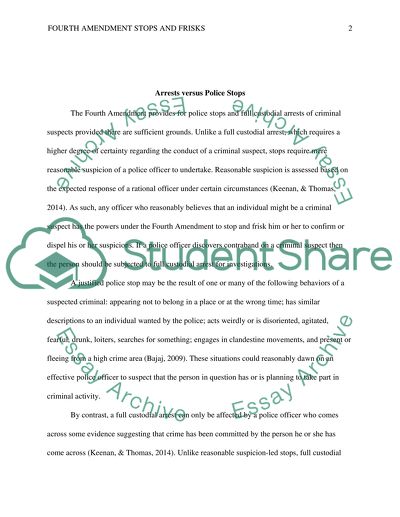Fourth Admendment: Stop & Frisk Assignment Example | Topics and Well Written Essays - 500 words. Retrieved from https://studentshare.org/law/1682201-fourth-admendment-stop-frisk
Fourth Admendment: Stop & Frisk Assignment Example | Topics and Well Written Essays - 500 Words. https://studentshare.org/law/1682201-fourth-admendment-stop-frisk.


